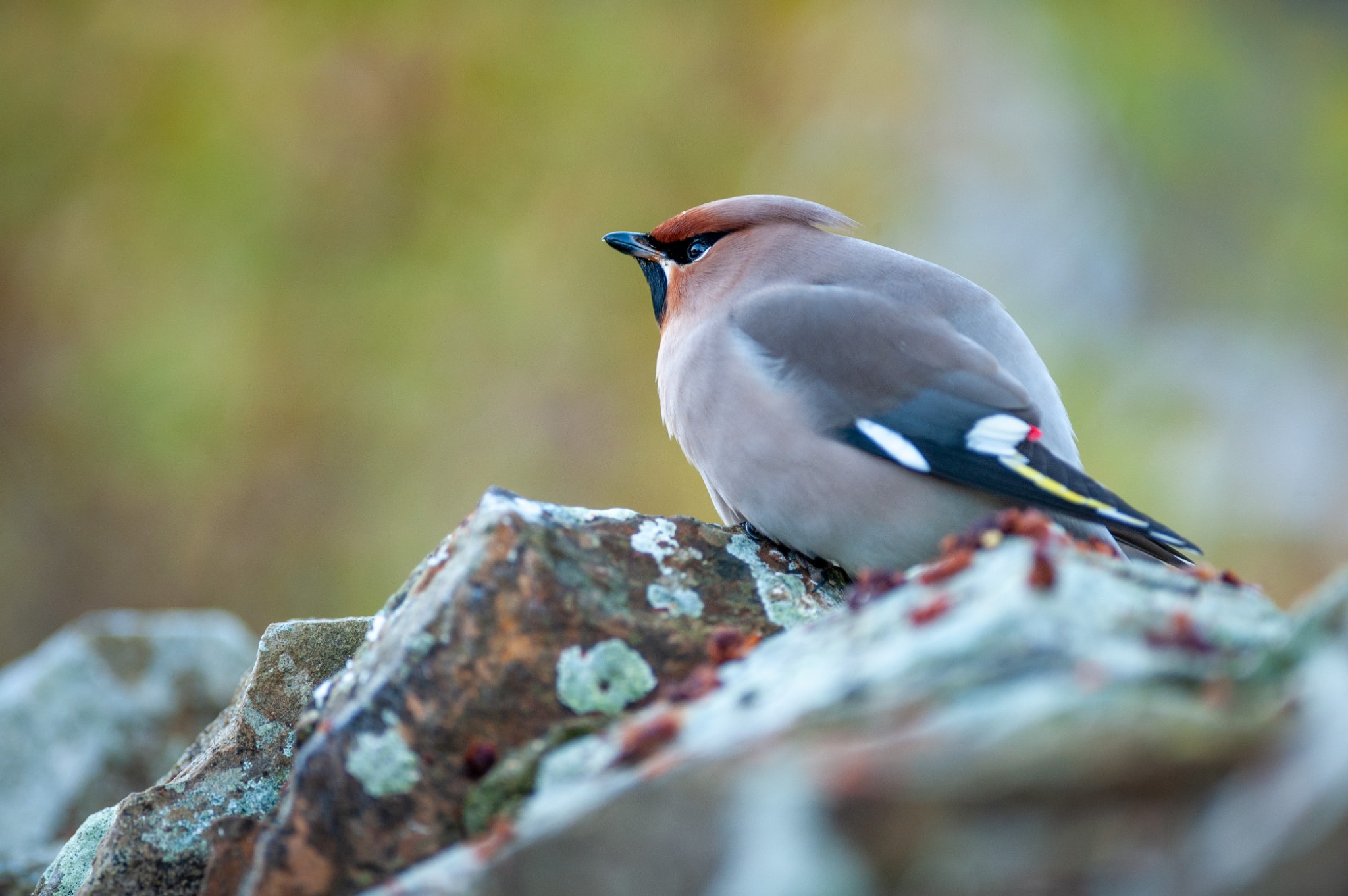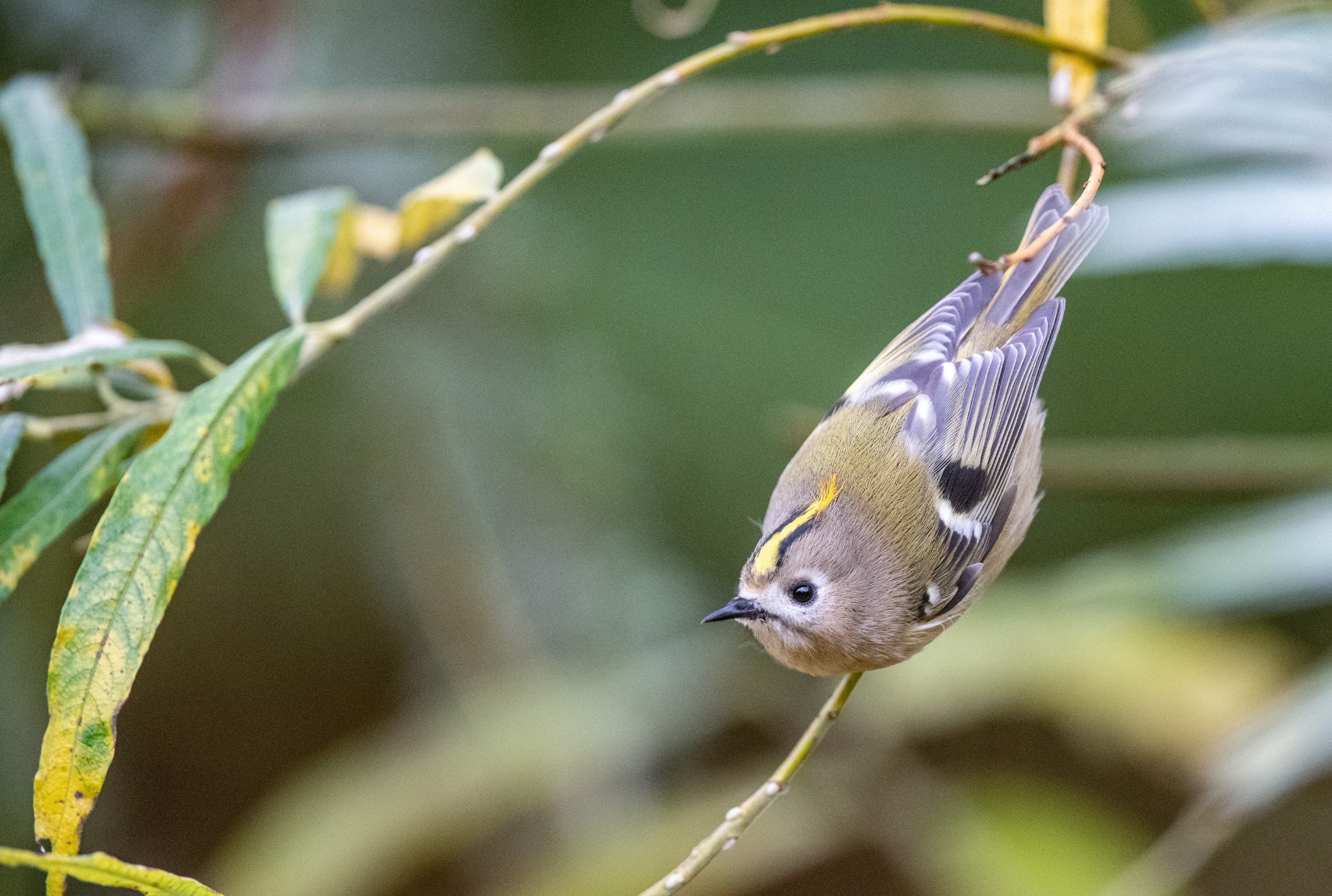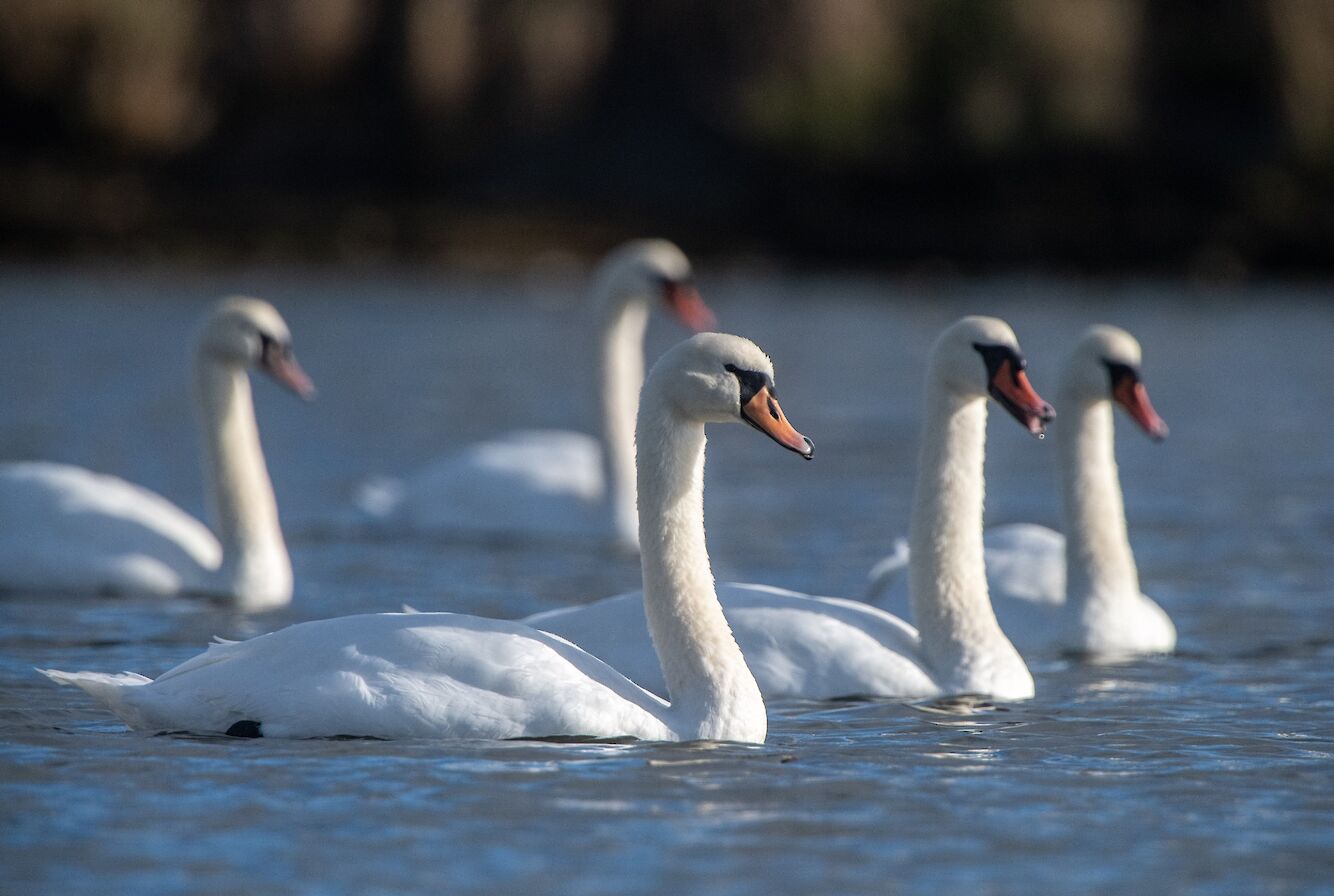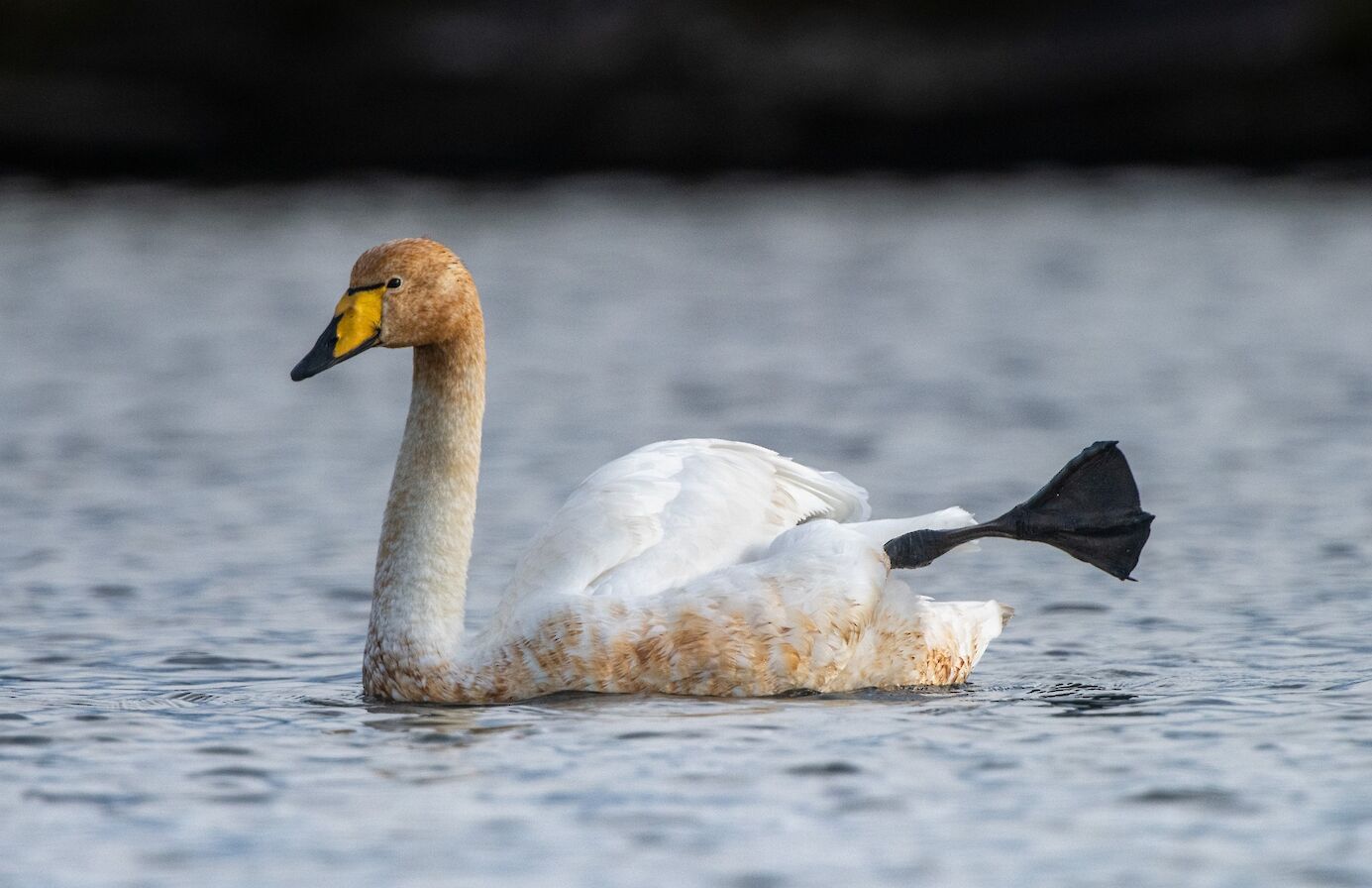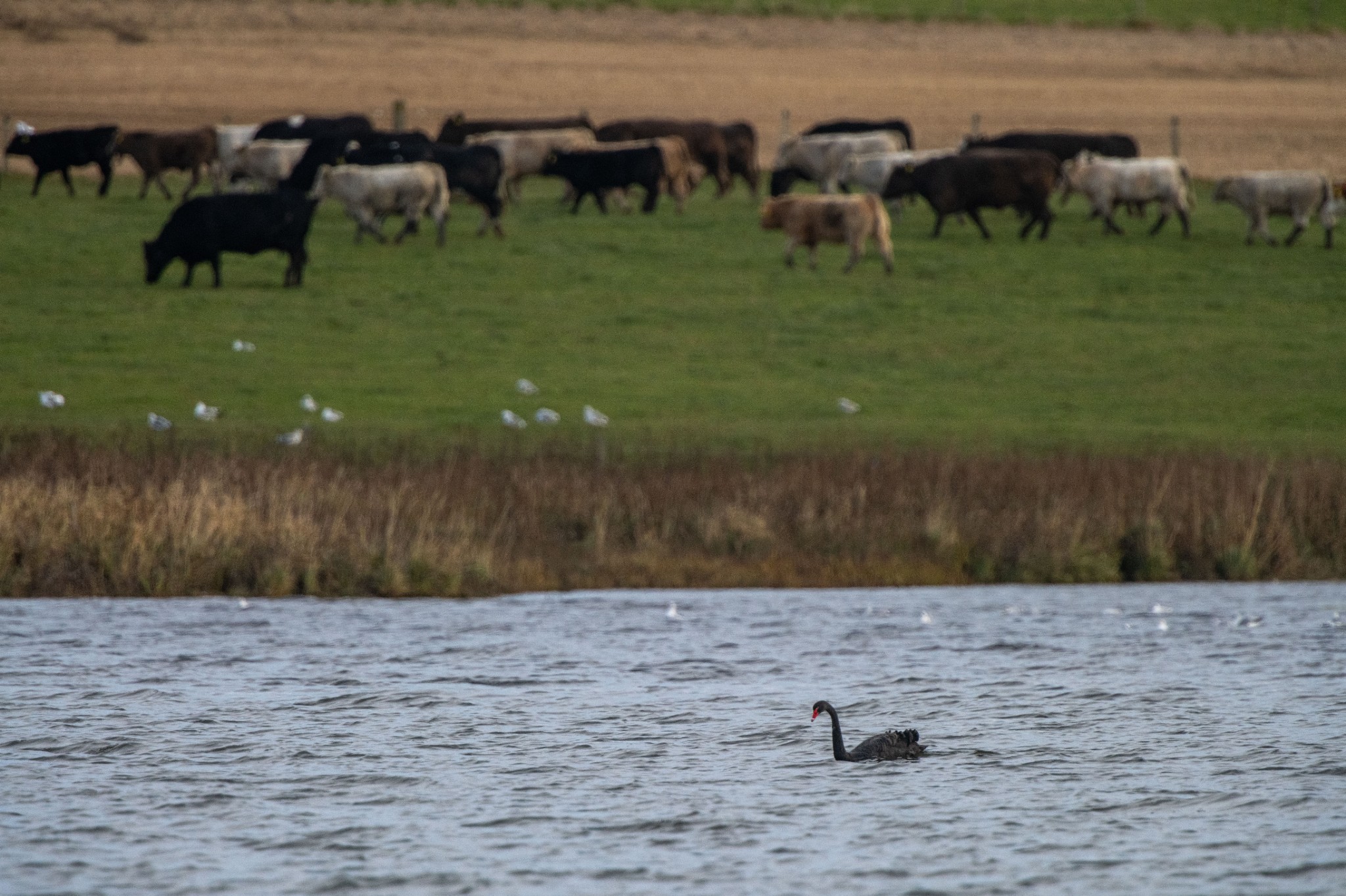The weather of late might be described as challenging.
Predominantly arriving from the east, it has generated some big seas, making a mess of the shore with the holdfasts of large seaweeds like furbelows. But it also brings visitors, some helped on their way, like the redwings and stockier-looking fieldfares. It was quite a sight driving past the fields of Tankerness, seeing them full of gulls, greylag geese, curlew and Scadinavian thrushes so numerous they looked like wind-blown autumn leaves rushing to get ahead of each other.
Now, an even more exotic looking arrival has found rich pickings amongst the trees and bushes in gardens across Orkney, the waxwing.
Whilst berries continue to be numerous, they are less likely to be tempted by the apples offered by us. Any waxwings in the vicinity of my garden might be out of luck anyway such is the speed with which the starlings are eating the apples. It’s worth double checking if you think the bird you have spotted out of the corner of your eye is ‘just a starling’. Whilst completely different colours of course, a flying waxwing and an airborne starling look remarkably similar in shape and size.
The numbers of another bird have also swelled as a result of these winds. For me it’s a truly remarkable little thing, in fact it’s the smallest and lightest bird found in the UK, the diminutive goldcrest. At only eight or nine centimetres long, they are truly tiny, weighing in at around five or six grams - the same as a twenty pence piece! I’ve just put a 20p coin in my palm and barely notice it weighs anything.
The wren by comparison is a veritable heavyweight at twice the weight of a goldcrest. As you might imagine, something so small isn’t always so easy to spot. I’ve come to a garden in Deerness as this parish is the first stop for many birds tired after their journey across the North Sea. The first bird I spot however moves like lightning, a male sparrowhawk. They are not a bird to hang around in the presence of people and it disappears expertly through the trees.
The first bird I hear isn’t a goldcrest either but a wren, its beautiful song being belted out from a nearby rosa rugosa. So, I sit and wait a while, with blackbirds sporadically bursting from bushes, flying as low as they can between cover, no doubt aware that this foliage also favours that sparrowhawk I disturbed.
Sure enough, a thin high-pitched call of three syllables comes from my left amongst a stand of fir trees. Goldcrest have in fact done rather well because of forestry plantations. They do breed in Orkney amongst such coniferous trees but here they are perhaps best described as an ‘uncommon breeder’. At first all I can make out is something small flitting rather frustratingly at the tops of the trees. I know from experience however that the best thing to do is just wait and eventually the goldcrest will come to me - it’s only a small garden after all.
My patience is rewarded as not one but three goldcrests bounce down the trunk and alight into a thick stand of willows. They are pale green above and an even paler off-green or fawn colour below. They have a hunched appearance with a rather short neck and rounded head. And it’s the head of course where the bird gets its name. Its bright yellow crown, flanked by black stripes on either side, is beautiful in its simplicity and boldness. The female’s yellow stripe is predominantly exactly that, yellow. The male however has some orange mixed in, though this is difficult to see whilst in the field.
This is where some confusion can arise as its cousin, the firecrest, also has orange in its crest. However, there are some simple steps to help us. The male firecrest’s crest has much orange in it whilst the bird is ‘relaxed’, whereas you are only likely to see the orange in that of the male goldcrest whilst it is displaying and the feathers are erect. The firecrest also has a distinguishing white ‘supercilium’ or eye stripe above its eye which the goldcrest lacks. This coupled with the fact a firecrest is an exceptionally rare visitor to Orkney makes it more than likely the bird you’re sighting is a goldcrest.
One goldcrest is getting closer and closer to me - they’re noted for their ‘tame-ness’ - and as it does, I marvel and wonder at how it survives the harsh weather it faces in Orkney. I can see clearly now its thin, pointed, black bill as it picks meticulously amongst the twigs, the beak reminding me somewhat of a sharpened pencil. Unsurprisingly, this peedie bird is after tiny prey such as spiders and insect eggs.
They seem endlessly restless and so having managed a few images, I leave them to flit back amongst the treetops and head back to Kirkwall to photograph a bird at the other end of the scales, the whooper swan.
Amongst the 30 or so mute swans gathered on the Peedie Sea are three whooper swans - two adults and one of their offspring from this year. It’s common to see family groups like this, these birds having migrated from Iceland together and will also start their return journey together in the spring. The juvenile bird of the three has a greyish plumage with a slightly pink hue, as does the bill. There is no mistaking the bill of the whooper swan though; a straighter angle than that of the mute swan, it is lemon yellow at its base and jet black two thirds to the tip.
I’ve always had a real soft spot for whooper swans. Nowadays greylag geese are very numerous all over Orkney, but that wasn’t always the case. As a child in the 1980s if I heard their distinctive honking calls, I would run outside to see them flying overhead in their ‘V’ formations en-route further south. The idea of migration and the challenges it entails has fascinated me since those days. Sometimes when I looked up it wasn’t greylag geese at all, but rather families of whooper swans.
Like these whoopers, I remember wondering why they looked dirty underneath. Not only do the heads of these swans look rusty but as they raise their bodies from the water to stretch their wings, I can see their bellies are rusty too. This is a result of iron rich compounds found in some of the areas they feed in during the Icelandic summer months. They will gradually lose this discolouration as the winter progresses.
As the swans mingle this is a great opportunity to see the differences between the two species. The most obvious is these whoopers are very vocal! They have a loud honking call not unlike an old-fashioned car horn. Whilst the mute swans aren’t actually mute, they have a more nasal grunt with a flourish at the end.
The curved neck of the mute swan gives it an elegant air whilst the whooper swan has a much straighter neck, giving it a somewhat stiff appearance. Thinking back to the five-or-six-gram weight of the goldcrest, these whooper swans will weigh anything between nine and eleven kilograms, and a mute swan perhaps even a little heavier.
A small group of mute swans has alighted and are flying overhead, the noise which must be one of the best noises in the natural world! They do a circuit of the Peedie Sea before landing again, their massive webbed feet acting as brakes as they hit the water.
The whooper swan has an interesting Orcadian natural history. Several centuries ago, it was much more common than the mute swan and in fact a regular breeder. Unfortunately, the accessibility of its chosen nest sites made it a target for egg collectors. Today the whooper swan is only a very, very occasional breeder.
There is however another species of swan to be found in Orkney and I head west for the novelty of it. I pass a group of swans in a stubble field on my way towards the Harry Loch where this anomaly resides. More often than not, swans in a field will be whoopers but not exclusively - I remember seeing around 20 swans in a field in Tankerness once and lifted my binoculars to find that they were in fact mute swans.
If you head to the Barnhouse hide near the Standing Stones of Stenness, it’s a great place to see large groups of feeding mute swans and, unusually, a black swan.
A native of Australia, this bird must be an escapee from a wildfowl collection but it has resided in Orkney for a long time. Whilst it doesn’t look like it’s been 100% accepted by the locals, it isn’t being chased away either. In fact, it looks quite at home.
Find out more about Raymond’s work via his official website. You can also find him on Facebook, Twitter and Instagram.
